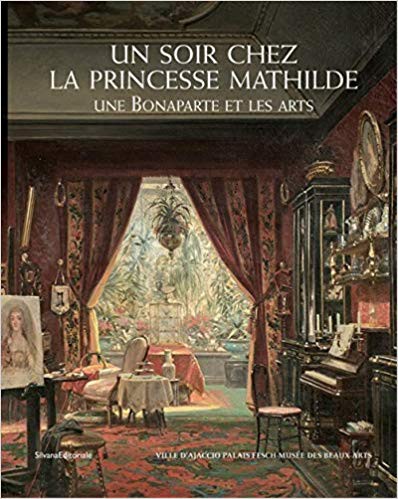Presentation by the publisher:
Mathilde Bonaparte (1820-1904) was a free woman. Daughter of Jerome, granddaughter of Charles and Laetitia, she was the proud niece of Napoleon I, whom she could have known and whose memory she venerated. Through her mother, Catherine of Württemberg, she was also the niece of the Russian tsar and cousin to all European monarchies. Smart and lively, she dreamed of marrying her cousin, the future Napoleon III, to whom she remained very close. She was not satisfied with this rank, of which she owed only to the chance of birth. She was also an artist. Every day, she painted in her studio. She invites painters to her home, whom she considered her friends. She collected modern art and older paintings, in her residences where she received the most selected members of society. A friend of writers, she was able to attract the Goncourt brothers, Sainte-Beuve, Théophile Gautier and indeed Gustave Flaubert. She lived long enough to know and appreciate Edmond Rostand and to invite the young Marcel Proust, who treasured a most dazzling memory of her. This exhibition is an invitation to enter the intimacy of this exceptional Bonaparte, as if, in search of lost time, you were going to spend an evening with Princess Mathilde…
In line with the exhibitions devoted to members of the Bonaparte family and their relationship with the arts (Lucien Bonaparte, un homme libre, 2010; Caroline, sur de Napoléon, queen of the arts, 2017), Palais Fesch presents an exhibition honouring Napoleon III’s cousin, whose proximity to the world of the arts and literature made her one of the most prominent personalities of the second half of the 19th century. This niece of Napoleon received in her salons in the rue de Courcelles and the rue de Berri, but also in her property in Saint-Gratien, the greatest names in French literature (Gustave Flaubert, Théophile Gautier, Sainte-Beuve, the Goncourt brothers and fascinated the young Marcel Proust), but also many artists (Giraud, Hébert, Cabanel, Meissonier, Fromentin) whose works she collected. This project is built around sections relating to her Italian exile, her own artistic career, her various residencies and above all the relationship between her artistic tastes and her literary salon, reviewed in the light of new documents.


